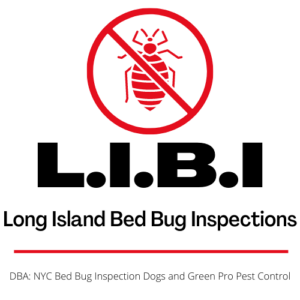Bed bugs are one of the most persistent of household pests. These small, elusive creatures have been a nuisance to humans for centuries. Their ability to spread quickly and discreetly makes them one of the most challenging pests to control.
Understanding how these troublesome pests spread is an essential part of detection and prevention. Let’s look at some of the most common ways bed bugs travel and how they use their hitchhiking and hiding skills to infiltrate our homes and businesses.
Hitchhiking
Unlike many other household pests, bed bugs can’t jump or fly. To get from one location to another they must crawl or hitch a ride on an unsuspecting host. Bed bugs cling onto personal belongings such as luggage, backpacks, clothing and even laptops. When the infested item is moved to a new location the bugs can hop off and establish a presence in their new environment.
This hitchhiking behavior is most common in places with a lot of human traffic. Human beings are the bed bug’s preferred method of travel as well as their preferred source of food.
Common places to pick up hitchhiking bed bugs include:
-
Hotels
-
Airports
-
Bus Stations
-
Movie Theatres
-
Public Buildings (court houses, churches, etc)
Travel
One of the most common ways bed bugs spread is through travel. Hotels, motels and hostels, due to the constant influx of guests, are hot-spots for bed bugs activity. When a traveler unknowingly picks up bed bugs from a hotel room they tend to be transported back home or to the traveler’s next destination.
Business travelers and vacationing families can carry bed bugs from one region to another. The rise in global travel over the last several decades has contributed significantly to the resurgence of bed bugs in many cities around the world.
Secondhand Shopping
Thrift shops are a great way to save money. However, while shopping secondhand offers the chance to find treasures at affordable prices it also comes with an increased risk for exposure to bed bugs.
Items like mattresses, couches, dressers, and even clothing can harbor bed bugs or their eggs. This is particularly true when it comes to buying items from unknown sources. Because bed bugs can hide in the tiniest of cracks and crevices it can be difficult to spot them without a thorough inspection.
Thrift stores and yard sales may seem like they offer great deals, but those deals can come with some unwanted guests. Be careful when shopping secondhand and always thoroughly inspect anything you purchase for signs of bed bugs before you bring it into your home.
Multi-Unit Housing Units
Apartment buildings, condominiums and other multi-unit residences are ideal environments for bed bugs. These pests can crawl through walls, floorboards, electrical outlets and even plumbing systems to reach new habitats. Which is why bed bugs are so difficult to contain in shared living environments.
When one apartment becomes infested it’s common for neighboring units to also be affected. In these settings professional pest control is necessary to eliminated the infestation and prevent further spread.
Public Spaces
As we know bed bugs like to hitchhike to new environments on the bodies and belongings of unsuspecting hosts. But where do we pick up those hitchhiking bed bugs? Public spaces can often be ground zero for the spread of bed bugs in communities.
Bed bugs have been found in many public spaces such as:
-
Libraries
-
Hospitals
-
Office Buildings
-
Schools
In these environments, bed bugs may crawl onto personal items and be carried home. Even brief contact with an infested seat or piece of furniture can be enough to transport a bug or two, which can then multiply quickly in the right conditions.
Human Behavior
One of the most overlooked ways bed bugs spread is through unintentional human behavior. Lack of awareness, delayed responses to early signs, and failure to follow prevention measures all contribute to the spread of bed bugs.
Some people may attempt to treat infestations themselves with inadequate methods, causing bugs to scatter and infest other areas. Others might throw out infested furniture without marking it as contaminated, leading someone else to pick it up and bring it home. Ignoring the signs of bed bugs—such as bites, blood spots on sheets, or dark fecal spots—also gives them time to establish a larger infestation.
Bed bugs are notorious for their ability to spread quickly and silently. Their main method of travel—hitchhiking on people and belongings—makes them particularly difficult to control. By understanding how bed bugs spread, individuals and communities can take proactive steps to prevent infestations and limit their impact. Awareness, early detection, and proper intervention are the keys to keeping these unwelcome guests at bay.
-
-
Published by Scott Palatnik
-
We are Bedbug Inspection & Elimination specialists.
From Manhattan to Montauk and all points in between.
Got questions?
We got answers.
Give us a call @ 516-619-6149


